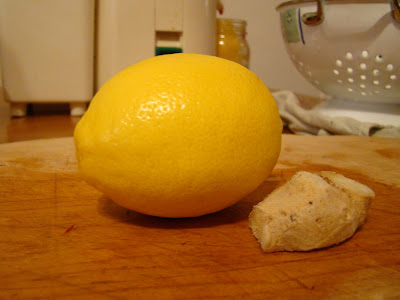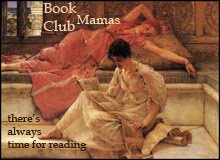
Tomorrow my daughter and I set off on an adventure with our homeschool group. We're going camping in Mount Tamalpais State Park near San Francisco. Although it is a state park, being near the city, it has been visited and traversed by city folk. I read somewhere that Jack Kerouac and Gary Snyder spilled some wine together in a little shack there (which partially inspired The Dharma Bums). After the 1967 Human Be-In in San Francisco, poets Allen Ginsberg and Gary Snyder got together at Mount Tam to do a sort of walkabout or walking meditation. They called it "circumambulating." Here is a poem by Snyder:
The Circumambulation of Mount Tamalpais
Walking up and around the long ridge of Tamalpais, “Bay Mountain,” circling and climbing – chanting – to show respect and to clarify the mind. Philip Whalen, Allen Ginsburg, and I learned this practice in Asia. So we opened a route around Tam. It takes a day.
STAGE ONE
Muir Woods: The bed of Redwood Creek just where the Dipsea Trail crosses it. Even in the dryest season of this year some running water. Mountains make springs.
Prajñāparamitā-hridaya-sūtra
Dhāranī for Removing Disasters
Four Vows
Splash across the creek and head up the Dipsea Trail, the steep wooded slope and into four meadows. Gold dry grass. Cows – a huge pissing, her ears out, looking around with large eyes and mottled nose. As we laugh. “-Excuse us for laughing at you.” Hazy day, butterflies tan as grass that sit on silver-weathered fence posts, a gang of crows. “I can smell fried chicken” Allen says – only the simmering California laurel leaves. The trail winds crossed and intertwining with a dirt jeep road.
TWO
A small twisted ancient interior live oak splitting a rock outcrop an hour up the trail.
Dhāranī for Removing Disasters
The Heat Mantra
A tiny chörten before this tree.
Into the woods. Maze fence gate. Young Douglas fir, redwood, a new state of being. Sun on madrone: to the bare meadow knoll. (Last Spring a bed of wild iris about here and this time too, a lazuli bunting.)
THREE
A ring of outcropped rocks. A natural little dolmen-circle right where the Dipsea crests on the ridge. Looking down a canyon to the ocean – not so far.
Dhāranī for Removing Disasters
Hari Om Namo Shiva
And on to Pan Toll, across the road, and up the Old Mine Trail. A doe and fawn, silvery gray. More crows.
FOUR
Rock springs. A new trickle even now-
The Sarasvatī Mantra
Dhāranī for Removing Disasters
-in the shade of a big oak spreading out the map on a picnic table. Then up the Benstein Trail to Rifle Camp, old food-cache boxes hanging from wires. A bit north, in the oak woods and rocks,a neat little saddhu hut built of dry natural bits of wood and parts of old crates; roofed with shakes and black plastic. A book called Harmony left there. Lunch by the stream, too tiny a trickle, we drink water from our bota. The food offerings are swiss cheese sandwiches, swede bread with liverwurst, salami, jack cheese, olives, gomuku-no-moto from a can, grapes, penettone with apple-currant jelly and sweet butter, oranges, and soujouki – greek walnuts in grape-juice paste. All in the shade, at Rifle Camp.
FIVE
A notable serpentine outcropping, not far after Rifle Camp.
Om Shri Maitreya
Dhāranī for Removing Disasters
SIX
Collier Spring – in a redwood grove – water trickling out a pipe.
Dhāranī of the Great Compassionate One
California nutmeg, golden chinquapin the fruit with burrs, the chaparral. Following the North Side Trail.
SEVEN
Inspiration Point.
Dhāranī for Removing Disasters
Mantra for Tārā
Looking down at Lagunitas. The gleam of water storage in the brushy hills. all that smog – and Mt. St. Helena faintly in the north. The houses of San Anselmo and San Rafael, once large estates…”The Peacock Gap Country Club” – Rocky brush climb up the North Ridge Trail.
EIGHT
Summit of Mt. Tamalpais. A ring of rock pinnacles around the lookout
Prajñāparamitā-hridaya-sūtra
Dhāranī for Removing Disasters
Dhāranī of the Great Compassionate One
Hari Krishna Mantra
Om Shri Maitreya
Hari Om Namo Shiva
All about the bay, such smog and sense of heat. May the whole planet not get like this. Start the descent down the Throckmorton Hogback Trail (Fern Canyon an alternative.)
NINE
Parking lot of Mountain Home. Cars whiz by, sun glare from the west.
Dhāranī for Removing Disasters
Gopala Mantra
Then across from the California Alpine Club, the Ocean View Trail goes down. Some yellow broom flowers still out. The long descending trail into shadowy giant redwood trees.
TEN
The bed of Redwood Creek again.
Prajñāparamitā-hridaya-sūtra
Dhāranī for Removing Disasters
Hari Om Namo Shiva
Hari Krishna Mantra
Four Vows
–standing in our little circle, blowing the conch, shaking the staff rings, right in the parking lot.
~ Gary Snyder
I go to Mount Tam, with literature in hand, with this history, this richness in mind. I'm excited about standing in this place where some of my favorite poets have stood. The region was once inhabited by Miwok Indians and is steeped in their history, as well. In fact, the mountain's name was most likely a Spanish reference to the Miwok, who they called "Tamal." The plants and wildlife there have stood witness and have their tale to tell. I look forward to our journey, to standing witness, to being there completely with my daughter and our dear friends. I hope to go with an open heart and to see through my own eyes. See you in a few days!














































